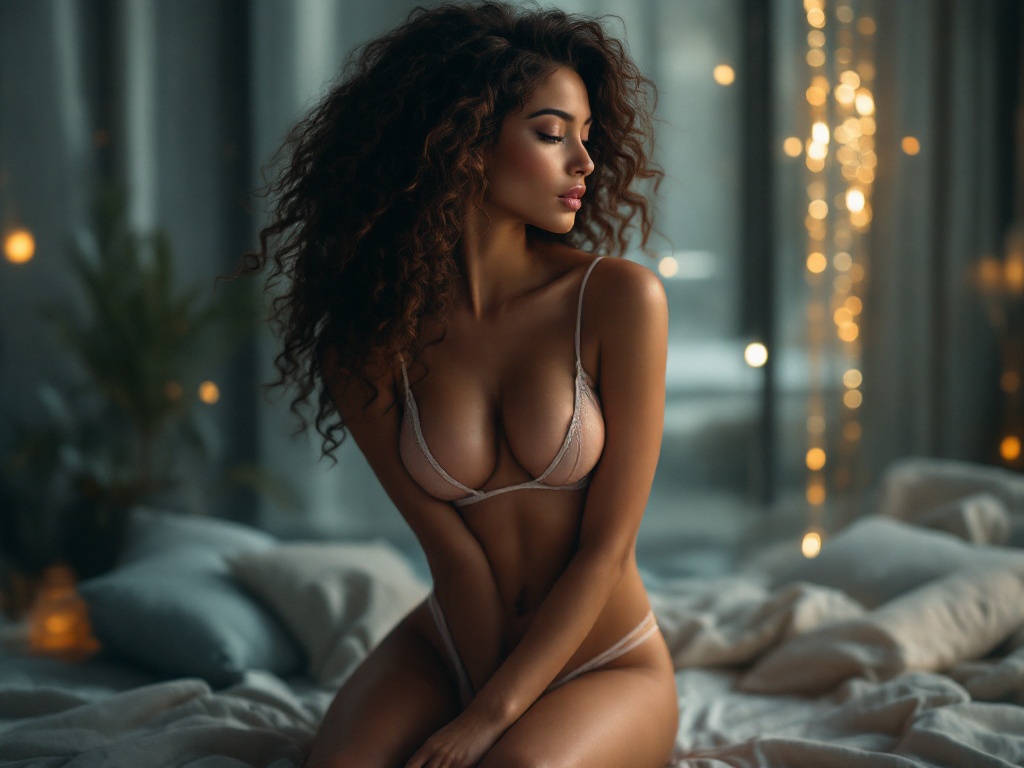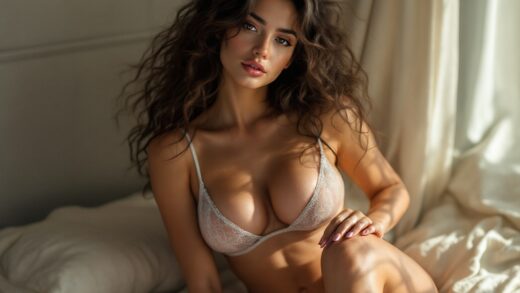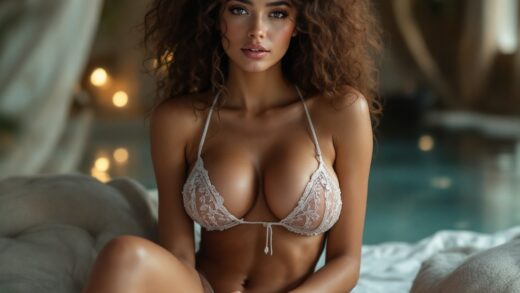Throughout the annals of history, art has served as a formidable vessel for articulating human emotions, cravings, and cultural tales. Among various art forms, erotic art has consistently defied societal conventions, offering a unique perspective to examine sexuality and intimacy. As society progresses towards modernization, technology has emerged as a revolutionary force shaping artistic expression. One particularly notable advancement is the emergence of neural networks, a category of artificial intelligence (AI) capable of crafting mesmerizing visual narratives. By merging extensive datasets of existing erotic art with sophisticated algorithms, these neural networks generate original compositions that ignite both imagination and discourse. In this piece, we delve into the fascinating intersection of erotic art and AI, uncovering the complexities of creations driven by neural networks.
Neural networks embody a captivating advancement in technology, adeptly imitating the cognitive functions of the human brain. These computational frameworks consist of interconnected nodes, known as “neurons,” which process information and learn from data. The learning mechanism involves identifying patterns, making choices, and ultimately generating outputs based on the input data they’ve been trained on. Thanks to this innovation, neural networks are now utilized in an array of disciplines including language processing, image recognition, and, more recently, art generation. Within the sphere of erotic art, these models merge diverse artistic styles, fundamentally transforming our understanding of creativity and art itself.
What are Neural Networks?
At their essence, neural networks harness extensive datasets to instruct algorithms in the identification and creation of content. Comprising numerous layers, these networks process input data, with each layer enhancing the output based on recognized features. The brilliance of this system lies in its capability to yield intricate and nuanced depictions that frequently challenge conventional limits. By exposing neural networks to a variety of visual art forms, they are not merely trained to replicate but also to visually innovate. This process demands immense computational resources and a continuous influx of data to achieve favorable outcomes. As the sophistication of neural networks continues to advance, the potential for artistic creation expands exponentially, prompting new discussions regarding authorship and the essence of creativity in our digital landscape.

The Intersection of AI and Eroticism
The role of artificial intelligence in crafting erotic imagery generates a distinctive array of cultural conversations and societal responses. Public opinion is highly varied, encompassing everything from intrigue over the innovative methods employed to discomfort arising from ethical dilemmas. This intersection poses critical inquiries about the representation of sexuality in digital contexts—who holds the reins of the narrative? Additionally, how can we interpret artistic intent when machines, devoid of emotions and consciousness, produce art infused with sexual themes? Such questions highlight the importance of gaining a nuanced understanding of the capabilities and boundaries of AI.
The Process of Generating Erotic Art
The adventure of crafting erotic art through neural networks is as intricate as it is captivating. It begins with amassing a diverse collection of input data, which can span an array of sources, including classic erotic paintings, photography, and digital artistry. This varied input is essential for the effective training of the neural network. Following this, the model embarks on extensive training, continually honing its output through numerous iterations.
| Phase | Detailed Explanation |
|---|---|
| Data Compilation | Assembling varied datasets of pre-existing erotic art. |
| Model Instruction | Inputting data into the neural network for algorithmic learning. |
| Art Generation | Creating original erotic art pieces based on the learned data. |
Upon completion of the training phase, the model is capable of producing a wealth of unique artworks that resonate with the styles it absorbed during its education. Intriguingly, this process transcends the mere replication of existing works, instead offering fresh interpretations and reimagined depictions of erotic themes. The implications of AI within this realm stretch beyond aesthetic surfaces; they provoke discussions about the nature of creativity, authenticity, and our perception of human sexuality.

Ethical Considerations
The creation and distribution of AI-crafted erotic art carry with them a host of ethical dilemmas that warrant thorough examination. A significant concern centers around the issue of consent; do AI-generated images inadvertently infringe upon the dignity of real individuals? Representation also emerges as a key topic, especially in how bodies, identities, and sexualities are portrayed. Additionally, discourse around regulations and the potential necessity for guidelines governing the creative output of AI, particularly in delicate contexts, is crucial. Engaging with these ethical considerations is vital for establishing a responsible framework within which AI operates when addressing such intimate subjects.
Reception and Critique
The reactions of the art community to AI-generated erotic art showcase a wide spectrum of opinions. While some view the technology as a groundbreaking tool for explorative creativity, others express skepticism, raising concerns over the authenticity of art created absent human emotion. The diverse viewpoints can typically be encapsulated as follows:
- Appreciation for innovation and the subversion of artistic conventions.
- Worries regarding the emotional depth and authenticity of pieces produced by AI.
- Debate surrounding technology’s impact on conventional art forms.
This critique not only reflects varying perspectives on art but also highlights a broader cultural conversation about technology’s role in our lives. As AI becomes increasingly woven into creative practices, many ponder where to delineate the boundaries concerning art, authenticity, and the human experience.
Conclusion
In conclusion, the exploration of erotic art birthed by neural networks unveils profound inquiries regarding the intersection of technology and human artistry. This emerging field encourages a reevaluation of artistic boundaries while simultaneously engaging with critical ethical discussions. As we navigate this intricate landscape, it is essential to balance innovation with responsible engagement in delicate areas. The future of erotic art may reside in harnessing AI’s creative potentials, all while remaining vigilant about its ethical consequences and societal influences.
FAQ
- What is AI-generated erotic art?
AI-generated erotic art refers to erotic images produced through algorithms and models, specifically neural networks, which learn from pre-existing artwork to create new compositions. - Are there ethical concerns with AI-generated erotic art?
Absolutely, multiple ethical concerns arise, including questions of consent, potential exploitation, and the implications of creating art that may misrepresent individuals or communities. - Can AI genuinely comprehend human sexuality?
No, while AI can generate visual representations related to human sexuality, it lacks emotional depth or understanding; it merely mimics patterns derived from datasets. - What are neural networks, and how do they generate art?
Neural networks are computational models inspired by the structure of the human brain that process data, learn patterns, and can generate new content, including artistic visuals. - Is AI-generated erotic art classified as real art?
This remains a contentious issue. Some assert that true artistry necessitates human emotion and intent, while others appreciate the innovative processes and results produced by AI.


